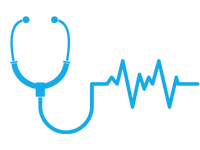
How To Become A Respiratory Therapy Technician?
Patients with breathing problems are typically treated by technicians trained in respiratory therapy. The field of respiratory therapy offers both professional and personal growth prospects. If you’re considering a career change into respiratory therapy, familiarizing yourself with the prerequisites for entry will serve you well. Learn about the career of a respiratory therapy technician, the average compensation and job outlook, and the required training in this comprehensive guide.
What Is a Respiratory Technician?
Patients with cardiopulmonary or other breathing diseases are cared for by respiratory technicians, also known as respiratory therapy technicians, who work under the direction of respiratory therapists and physicians. One of their responsibilities is determining what to do for patients based on their records and doctors’ orders.
Additional responsibilities include:
- Collecting arterial blood gas samples.
- Adjusting equipment controls.
- Monitoring patients during treatment.
- Adjusting therapies.
- Maintaining accurate medical records.
Aerosol generators, electrocardiogram machines, and ventilators are some devices they might undertake light maintenance and testing on.
What Is Respiratory Therapy?
Patients with breathing difficulties are evaluated through the process of respiratory therapy. A respiratory therapist’s job is to diagnose and treat lung conditions by physically examining the chest. Respiratory therapists’ primary responsibilities include making diagnoses of lung disease and breathing difficulties, supervising the use of respiratory equipment, and measuring oxygen levels in the blood. Respiratory therapists treat a variety of illnesses, including:
- Asthma
- Cardiac arrest
- Emphysema
- Apnea during sleep
- Cancer of the lungs
- COPD
- Bronchial asthma
- Heart abnormalities present at birth
- Diseases like cystic fibrosis
What does a respiratory therapy technician do?
A respiratory therapy technician‘s duties may vary widely depending on the setting. Respiratory therapy technician responsibilities typically include the following:
- Examining patients’ chests and making diagnoses.
- Formulating medical strategies for patients.
- Identifying respiratory problems and lung diseases.
- Caring for patients and implementing treatment programs.
- Teaching people how to use medical devices for treatment and raising awareness about patients’ circumstances.
- Handling respirators.
- Keeping track of patient medical records and noting any adjustments to treatment programs.
- Checking the oxygen content of the blood.
- Among these duties is helping other medical staff administer CPR.
- Having operations done while being monitored by a therapist or doctor.
- Checking a patient’s lung function to diagnose their health.
- Activating ventilators and keeping the patient on life support.
What are the Skills of Respiratory Therapy Technicians?
Some useful abilities of a respiratory therapy technician are listed below.
Mathematics and scientific savvy:
You must have solid scientific and mathematical skills to give your patients the best care possible. Reading medical journals, attending healthcare conferences, and keeping up with the latest developments in respiratory therapy are all great ways to improve your scientific and math knowledge.
Empathy:
Demonstrating empathy and compassion towards patients can enhance the relationship between healthcare providers and patients, increasing trust. Keep your cool, make direct eye contact with your patients, actively listen to them, and do everything you can to put yourself in their shoes to ease their anxiety.
Energy levels:
A job in respiratory therapy is fast-paced and physically demanding, and you may be on your feet for long periods. Regular exercise, a nutritious diet, and plenty of shut-eye are all great ways to keep and boost your energy levels.
Communication:
A respiratory therapy technician must communicate information verbally and in writing effectively. It can also be useful for communicating medical concepts to patients.
Careful consideration:
Technicians who work in respiratory care often update patient files and care strategies. Careful attention to detail is essential for accurate patient documentation, efficient record-keeping, and effective treatment.
Reasoning critically:
In the event of an emergency, it may be necessary for you to make quick decisions as a respiratory therapy technician. The ability to quickly assess these situations, obtain the necessary information, and choose the most appropriate treatment depends on your ability to think critically and solve problems.
Technical knowledge:
You can quickly access patient records and work more efficiently with medical software if you have solid technical abilities. With your skilled hands at the helm, life-saving equipment like ventilators, suction machines, and blood gas analyzers become your trusty sidekicks in delivering top-notch care to those in need.
What are the Courses in Respiratory Therapy Programs?
A respiratory therapist’s education covers a lot of ground, from learning how to think critically and write convincingly to learning the ins and outs of respiratory treatment. The criteria used to determine a student’s course load in a bachelor’s degree program in respiratory care are varied. Different schools have different curriculum expectations.
What classes a student takes also depends on their academic background. Students with no prior college credit must attend a series of general education classes like chemistry, human anatomy, and English before they may begin their chosen major.
Students who pursue a degree in respiratory therapy gain valuable experience in administrative and managerial tasks throughout their training. In addition, students learn to do cardiopulmonary stress tests, interpret chest radiographs, and intubate and suction artificial airways.
Students get real-world experience in a clinical setting through rotations and simulations before graduation. The following courses may be necessary or suggested for respiratory therapy students.
Intensive Care:
The techniques used to treat cardiovascular disease are covered in depth in a critical care course. Cardiopulmonary resuscitation (CPR), cardiovascular control, and nasal oxygen supplementation are just a few valuable skills students acquire. The undergraduate coursework includes instruction on identifying breathing disorders like sleep apnea.
Integrity in Authority:
Respiratory therapists handle confidential patient information. Professional ethics and data protection regulations are essential to success in this field. Crisis management and moral judgment are among the topics covered in this course. Students who take this course are better prepared for management roles because of the knowledge and experience they obtain.
Care for Children:
In a pediatric care course, students learn to diagnose and treat pediatric patients of all ages. Common diagnoses, therapeutic gases, and high-risk pregnancies are just some of the things they learn about. Those respiratory therapists with an interest in working in neonatal critical care will benefit greatly from taking this course.
An Overview of Clinical
Respiratory therapists must conduct clinical rotations as part of their training. The goal of an introductory clinical course is to familiarize students with the clinical context in which future professionals in the healthcare industry would work.
Students in respiratory therapy acquire knowledge by actively engaging in hands-on learning and establishing connections. Before beginning a clinical, students must pass a drug and background test administered by the school.
Management of Respiratory Symptoms:
The basics of case management are discussed in this course. Students’ understanding of respiratory illnesses will grow during the course. They look at topics including patient confidentiality, ethics, and the law.
What is the Work environment of respiratory therapy technicians?
While most full-time jobs for respiratory therapists are in hospitals, other settings are available. Respiratory therapy technicians can be found working in the following settings:
- Hospitals
- Centers for Diagnostics
- Healthcare centers
- Places of Learning
- Subacute care settings
- Labs that test lung function
- Nursing homes
- Critical care wards
- Centers for Rehab and Healing
- Diagnostic Facilities for Sleep Disorders
- Care centers for the elderly
- Care Facilities for Children
How to become a respiratory therapy technician?
If you’re considering a career change into respiratory therapy, familiarizing yourself with the entry-level expectations might help you make an informed decision. If you are interested in becoming a respiratory therapy technician, you can do so by following these steps:

Get a degree:
An undergraduate or associate’s degree in respiratory therapy or care is typically the first step for those interested in becoming respiratory therapy technicians. Classroom instruction and clinical rotations with respiratory physicians are available through these programs. This can be useful in understanding how to diagnose and assess individuals with respiratory and cardiovascular problems. During your time at the university, you may be required to take courses such as:
- Physiology
- Pharmacology
- The basics of respiratory care
- Anatomy
- Mathematics
- Chemistry
- Microbiology
- Pathophysiology
- Ventilation using mechanical
- Respiratory theory
To become a certified respiratory therapy technician, you must enroll in an undergraduate program approved by the Commission on Accreditation of Respiratory Care.
Gain practical knowledge:
The next step is to enter the workforce in some capacity, preferably an internship or entry-level career, in the medical area. Many recent RT grads enter the workforce as direct patient care providers. To gain experience, consider contacting clinics and hospitals in your locality to find a respiratory therapist to observe. Gaining relevant job experience in the healthcare sector is an excellent way to stand out to prospective employers and expand your professional network.
Get licensed:
Depending on where you live, you may need a certain amount of college credits or years of experience working in the field before you can take the exam to become a respiratory therapy technician. The NBRC is a popular option for many people seeking certification as a respiratory therapy technician. This certification requires the candidate to pass a written examination.
Continuing education courses required for certification renewal may be available through the American Association for Respiratory Care, local health departments, or approved post-secondary institutions. You can utilize a search engine to determine the steps necessary to become certified as a respiratory therapy technician in your state.
Become licensed in your state:
The next step is to apply for a license to practice respiratory therapy technician in the state where you intend to work. Respiratory care practitioners must be licensed in every state except Alaska, though the specifics may vary by region. A criminal record check and a 2- or 4-year degree are necessities in most states.
Look for a job:
If you want to impress hiring managers with your abilities as a respiratory therapy technician, you should write a resume that does so. Include your professional experience, appropriate certificates, state licenses, and formal education. Once you have a polished CV, you may utilize a search engine to identify respiratory therapy technician positions that fit your experience, education, and location preferences.
Suppose you have any contacts from your undergraduate school, internships, or previous jobs in the healthcare industry. In that case, you might contact them to see if they know of any healthcare clinics recruiting respiratory therapy technicians. Your chances of getting recruited will increase if one of your professional contacts recommends you to the company.
What are the certifications for a Respiratory Therapy Program?
Accreditation safeguards both the educational experience and the financial commitment of the student. Third-party organizations conduct reviews of institutions and awa Becoming a respiratory therapy technician requires educational and training programs that are accredited by the Commission on Accreditation for Respiratory Care (CoARC). Related alternative career options include becoming a respiratory therapist or a cardiovascular technologist, which require similar education and training requirements for regional or national accreditation based on their findings.
Colleges with an emphasis on vocational education and training are recognized on a national scale. Accreditation is a regional process for academic institutions. Regionally approved institutions are viewed favorably by employers. A student’s future employment prospects, eligibility for scholarships and grants, and freedom to attend another institution are all impacted by its accreditation status. Graduates from reputable universities are more attractive to potential employers. Accredited institutions are also eligible to obtain and disperse federal financial help.
Additionally, unlike regionally accredited institutions, nationally accredited institutions typically make it difficult for students to transfer credits. The same regional certifying authorities that accredit traditional universities also accredit online institutions. The evaluation and accreditation of respiratory therapy degree programs are carried out by the Commission on Accreditation for Respiratory Care (CoARC) through assessing degree outcomes and curriculum.
What Are Some Related Alternative Careers of Respiratory Technicians?
The job market for respiratory technicians is expected to contract, so having a few fallback options ready is a good idea. A respiratory therapist’s education and training requirements are comparable to a respiratory technician’s. The primary distinction between the two is that respiratory therapists receive additional training in emergency treatment, vital sign monitoring, and collaboration with medical professionals.
Cardiovascular technologists are similar to respiratory technicians in keeping tabs on patients’ vitals, documenting any changes, and reporting concerns to higher-ups. Electroencephalography, polysomnography, and nerve conduction investigations are just a few examples of neurological diagnostic procedures that neurodiagnostic technologists are trained to administer and analyze.
What is the Job outlook and salary of a respiratory therapy technician?
The median annual pay for respiratory therapists is $20,354, while the median annual salary for respiratory therapy technicians is still unknown. This sum can change depending on factors, including your level of expertise, where you live, and how much schooling you’ve had. The salary for respiratory therapists might be affected by the demand for their services in their region. Respiratory therapists may receive benefits from their employers in addition to a wage.
The BLS projects a 19% rise in demand for respiratory therapists between 2019 and 2029. Thus, the job market seems promising for those in the field. The possible increase in medical attention for respiratory illnesses, such as pneumonia and chronic obstructive pulmonary disease, may be due to the growing population of middle-aged and elderly Americans.
Conclusion
Becoming a respiratory therapy technician requires completing an accredited educational and training program. The Commission on Accreditation for Respiratory Care (CoARC) reviews degree outcomes and curriculum to ensure students receive high-quality instruction. The job outlook for respiratory therapy technicians is favorable, with the median annual salary around $20,354. Related alternative career options include becoming a respiratory therapist or a cardiovascular technologist. With the growth in demand for these services, now is a great time to pursue this career path.







